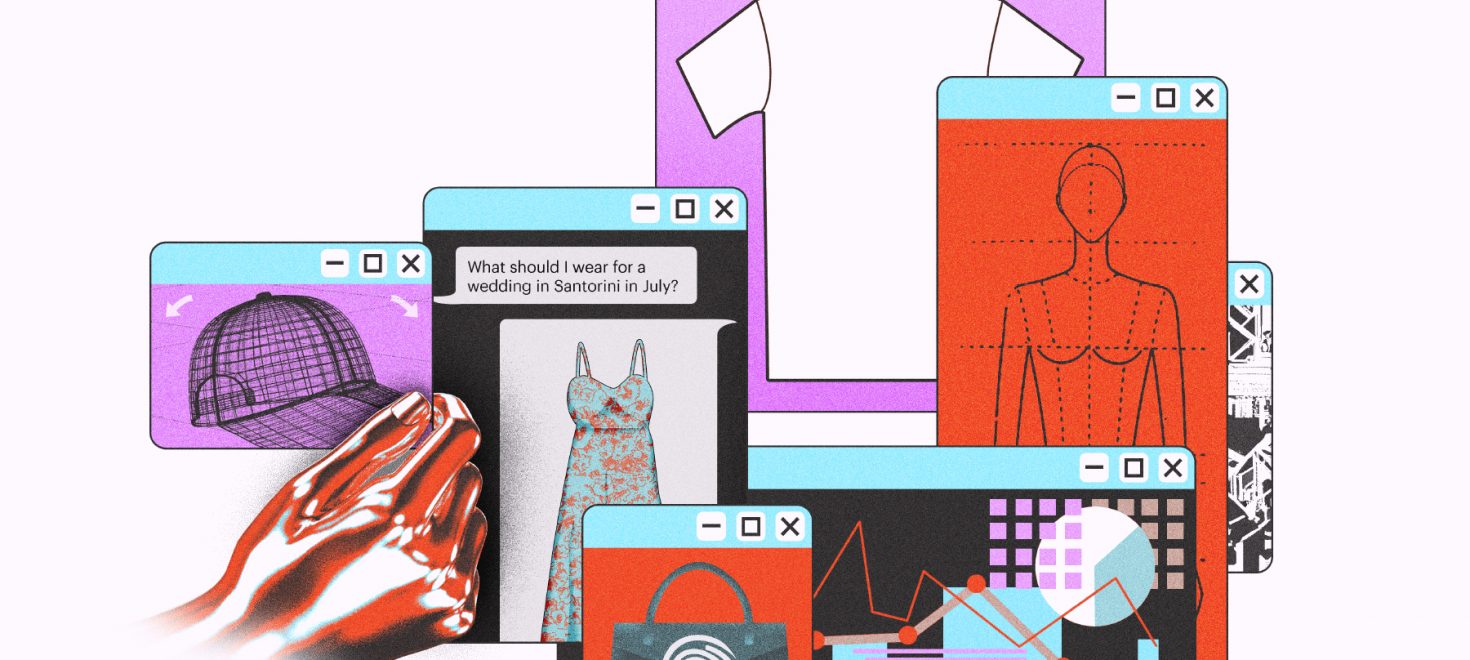Introduction
The fashion industry in India is currently experiencing a significant transformation with the integration of generative artificial intelligence (AI). This transformation is marked by promising figures, with the market projected to soar to approximately USD 1,475.4 million by 2032, showcasing a remarkable growth rate from USD 69.0 Mn in 2022, growing at a CAGR of 36.9% during the forecast period from 2023 to 2032. This technology is reshaping how designers create, how consumers shop, and how businesses operate. In this article, we explore the growing trend of generative AI in India’s fashion industry, examining its potential, challenges, and the key players driving its adoption.
The Rise of Generative AI in Indian Fashion
Generative AI, a subset of artificial intelligence, is changing the landscape of creativity in the Indian fashion scene. By utilizing machine learning algorithms, designers can now generate innovative designs, patterns, and styles with unprecedented efficiency and accuracy. This advancement empowers designers to explore new realms of creativity, offering limitless possibilities for experimentation and innovation.
One of the most significant applications of generative AI in Indian fashion is personalized recommendations. With access to vast amounts of data, AI algorithms can analyze consumer preferences, browsing histories, and social media interactions to offer tailored fashion suggestions. This personalized approach enhances the shopping experience for Indian consumers, leading to increased engagement and satisfaction.
Moreover, generative AI is optimizing production processes within the Indian fashion industry. By automating tasks such as pattern generation and production optimization, AI-powered systems enable brands to enhance efficiency, reduce costs, and improve scalability. This is particularly crucial in India’s dynamic market, where demand fluctuations require agile production capabilities.
Challenges and Opportunities
Despite the potential benefits of generative AI, its adoption in the Indian fashion industry presents challenges. One significant obstacle is the need for infrastructure development and digital literacy. Many fashion businesses in India, particularly smaller ones, lack the resources and expertise to effectively implement AI technologies. Addressing this gap will require investments in education, training, and technology infrastructure.
Another challenge is maintaining craftsmanship and artistic integrity amidst technological advancement. While generative AI offers new creative avenues, it must complement traditional design practices rather than replace them. Balancing technology with craftsmanship is essential for preserving the authenticity and cultural richness of India’s fashion heritage.
However, within these challenges lie significant opportunities for growth and innovation. India’s diverse fashion ecosystem, with its rich blend of cultures, traditions, and styles, provides fertile ground for the application of generative AI. By harnessing this technology, Indian designers can tap into new markets, cater to diverse consumer preferences, and establish a prominent global presence.
Key Players and Future Outlook
Several Indian companies are leading the way in adopting generative AI in fashion. From established brands to emerging startups, these players are driving innovation and shaping the future of Indian fashion. Companies like Myntra, Ajio, and Tata Cliq are investing in AI-powered solutions to enhance customer experiences and streamline supply chain operations.
Recent Development:
- 1. In 2023, Zalando introduced the Zalando Fashion Genome, powered by AI technology. This innovative system utilizes advanced algorithms and deep learning to analyze customer preferences, style history, and current trends. As a result, it provides personalized fashion suggestions tailored to individual tastes.
- 2. The year 2022 saw the collaboration between Levi’s and Google AI, resulting in the launch of the Levi’s Virtual Design Assistant. This AI-driven tool employs state-of-the-art technology to customize jeans according to body dimensions and fashion preferences, thereby enhancing the uniqueness of each garment.
- 3. Nike iD made its debut in 2021, in partnership with 3D Systems. This platform enables businesses to customize sneakers in terms of colors, materials, and performance. By leveraging AI technology, customers can now express their individuality through their footwear choices.
- 4. In 2020, Adidas ventured into AI-powered fashion with the introduction of StyleSnap. This innovative tool, in collaboration with 3D Systems, includes the Adidas Fit Finder, which utilizes machine vision to analyze images and recommend perfectly fitting sportswear. This collaboration has significantly transformed the sportswear shopping experience.
Conclusion
Generative AI is poised to revolutionize India’s fashion landscape, offering unprecedented opportunities for creativity, efficiency, and growth. While challenges persist, the potential benefits of embracing this technology are undeniable. By leveraging the power of AI, Indian designers, brands, and businesses can unlock new possibilities, delight consumers, and establish themselves as leaders in the global fashion arena. As we embark on this transformative journey, let us embrace generative AI as a catalyst for innovation and progress in India’s vibrant fashion industry.



Leave a Comment